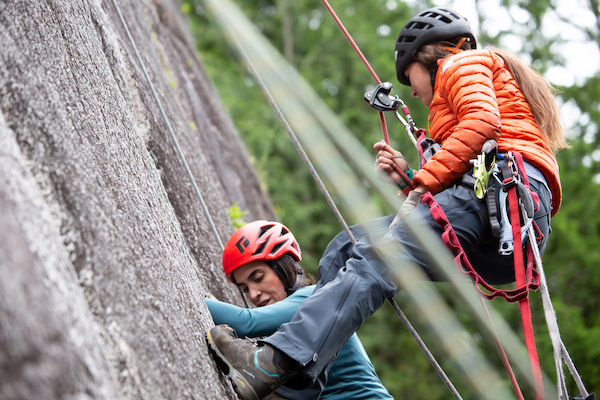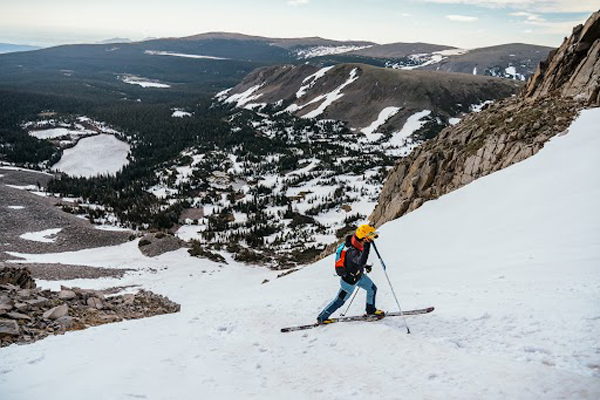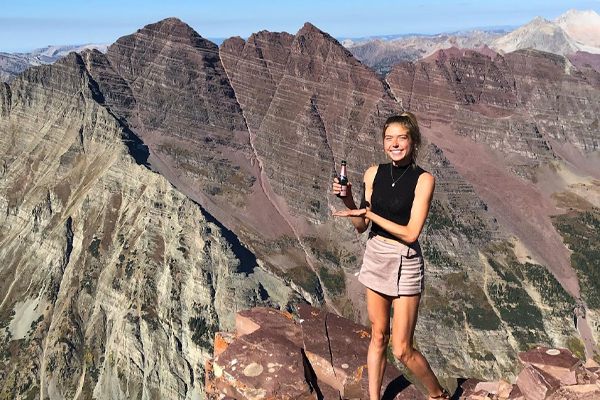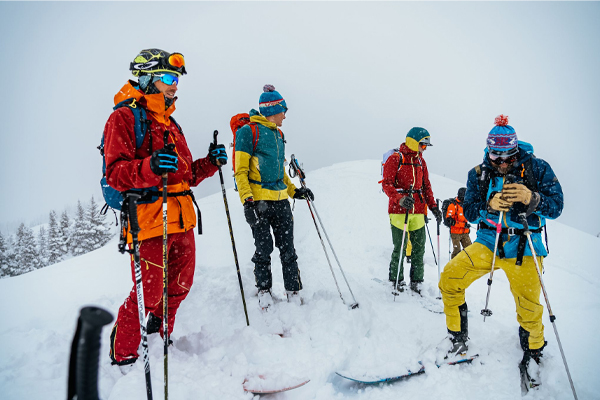Gym Series - Climbing for Power

Skip the weight room, learn to use the strength you already have and become a more powerful climber...
- - -
Power is the ability to apply strength quickly, meaning that strength is a prerequisite of power. Many climbers who struggle at being powerful simply don’t know how to harness the strength they already possess. Before you stop climbing to rush off to the weight room, try adding these exercises into your training for a few weeks to see if you can learn how to unlock more power.
Power, by nature, only lasts for short bursts. While these exercises can be done on either a rope or boulder problems, it is easier to focus on being powerful while bouldering.
Sloth/ Monkey Climbing
Static vs Momentum. The classic dividing line.
Sloth Climbing: Movement should be uncomfortably slow without coming to a complete stop. Think deep lock-offs while staying close to the wall. If it feels too easy, try larger moves or a steeper wall.
How to:
•Climb with exaggerated, dynamic movement, then switch to climbing like a “sloth,” or as statically as possible.
•Pushing yourself to exaggerate these two styles will pinpoint which style you are least comfortable with, and will help develop your intuition for when each style of climbing will be most effective. Because we naturally operate within our comfort zones, the value of this drill comes in finding the limits of these habits, and pushing them a little further each session.
•Mix in during your warm up for 3-5 problems—as you become more comfortable, apply to harder problems.
Single-Leg Climbing
Exactly as it sounds. Climb a boulder using only one leg. Repeat for opposite leg before moving to the next problem.
How To:
•Instead of simply trying to climb as usual but with one less leg, aim to practice generating power from strange positions.
•Be patient, find your balance before you move, and then generate momentum from that position.
•When you cut feet to move to the next foothold, keep your shoulders engaged and core tight. This has the added benefit of developing stable shoulders and core with feet off.
•Use problems that seem like the won’t ‘work well’ for this drill—climbs that traverse or only have feet on one side of the problem.
No-Impact Dyno
Dyno out of different positions, begin to latch the hold you are aiming for, but release it before you weight the hold. The goal here is to learn how to coordinate being explosive with all four points of contact at the same time, a necessary skill for any type of powerful move, even the ones where your feet stay on. This exercise also has the benefit of being more shoulder and elbow friendly than normal dynos because you aren’t weighting the hold you are aiming for, allowing you to build power without the added stress that comes with shock loading holds at high speed.
How To:
•Even though you aren’t weighting and swinging out on the target hold, try to arrive there with as much control as possible. We often associate dynoing as being a two-part movement where half the difficulty is getting there and the other half is controlling the destination hold. More often, holding the swing is difficult because we don’t arrive there in control (why small dynos are easy to control, but large sideways dynos feel out of control to stick).
•Being powerful is a skill, and this drill is equal parts skill development and physical training. Focus on practicing this drill as well as possible and you will find yourself improving at executing big moves (with feet on and off).
•After warming up but before starting to project, find an overhanging wall with large holds around chest height. Pick three different dynos to practice: 1) Left foot higher, 2) Right foot higher, and 3) Equal height feet.
•Attempt each move five consecutive times, resting as much as you need (around 30 seconds should be enough rest, but if you feel rushed, winded, or less powerful each go, take more).
•As you improve, create more challenging dynos by jumping diagonally or on a steeper angle, or add in a coordination factor by aiming for staggered holds. When you arrive to your destination hold, aim to position your hands over the best part of each hold, and latch the hold briefly, releasing it before you weight it.
Putting it All Together: Projecting Power
If you want to climb powerfully, you must climb powerfully. Practicing drills to get comfortable generating momentum allows you to develop new skills in a low stress environment, but as you become more comfortable being powerful on easier terrain, it will be necessary to start trying harder climbs that require the same skills at a difficulty near your limit.
Selecting Power Projects: Start by looking for large moves; they don’t have to be all out dynos, but the moves should be larger than climbs you would normally attempt. As you become comfortable doing large moves on comfortable holds, transition to flat or slopey holds—these require more body tension than incut grips, which you can overpower with finger strength. While a steep-angled wall is usually the go-to for those working power, incorporating low-angled walls will help you to become comfortable climbing near full extension. Think a move is too difficult? Try it seven times before you pass any judgement. If after seven attempts you don’t make any progress, consider moving on. However, if you get any closer after those seven goes, either keep trying, or consider coming back to that move in future sessions.
Plan of Attack: Pick two to three boulders and work each for 15-20 minutes a session. Try to change up the types of holds and keep the movement varied. Example: If you pick three boulders with jump moves to left hand gastons, your session will be much less productive than if you choose all different types of climbs.
Strong Shoulders: Keep your shoulders engaged when you latch holds dynamically. Being able to jump into an iron cross won’t do you much good if you turn into a ragdoll the second you hit the hold you’re aiming for. Aim to hit holds with control, a tall chest, bent elbows, and engaged shoulders. If you feel yourself sagging onto your arms instead of being able to stay tight through your shoulders and upper back, scale the moves back until they are easy enough to do while keeping strong engagement.
Regularly mixing these exercises into your climbing sessions will help identify the drills that feel the most challenging or unnatural, and help you identify weaknesses to target. A single power-focused session with these drills combined would look something like this:
Power Session
•Warm up: General movement or One Touch (link to first article) for 10-15 minutes
•Sloth/ Monkey: Three problems of increasing difficulty. Climb each one once in "sloth" style and once in "monkey" style.
•Single-Leg Climbing: Pick two problems to repeat twice each, once with only th4 left leg and then with only the right.
•No-Impact Dyno: Map out three dynos to attempt, and try each five times. Rest 15-30 seconds between each attempt (take more rest if you feel winded or rushed).
•Power Project: Pick two to four problems and session each for 15-20 minutes.
•Cool Down: End with some easy climbing on fun problems to loosen up before ending your session.
Written by The Power Company in partnership with La Sportiva.
Photos and Video: © Henna Taylor








